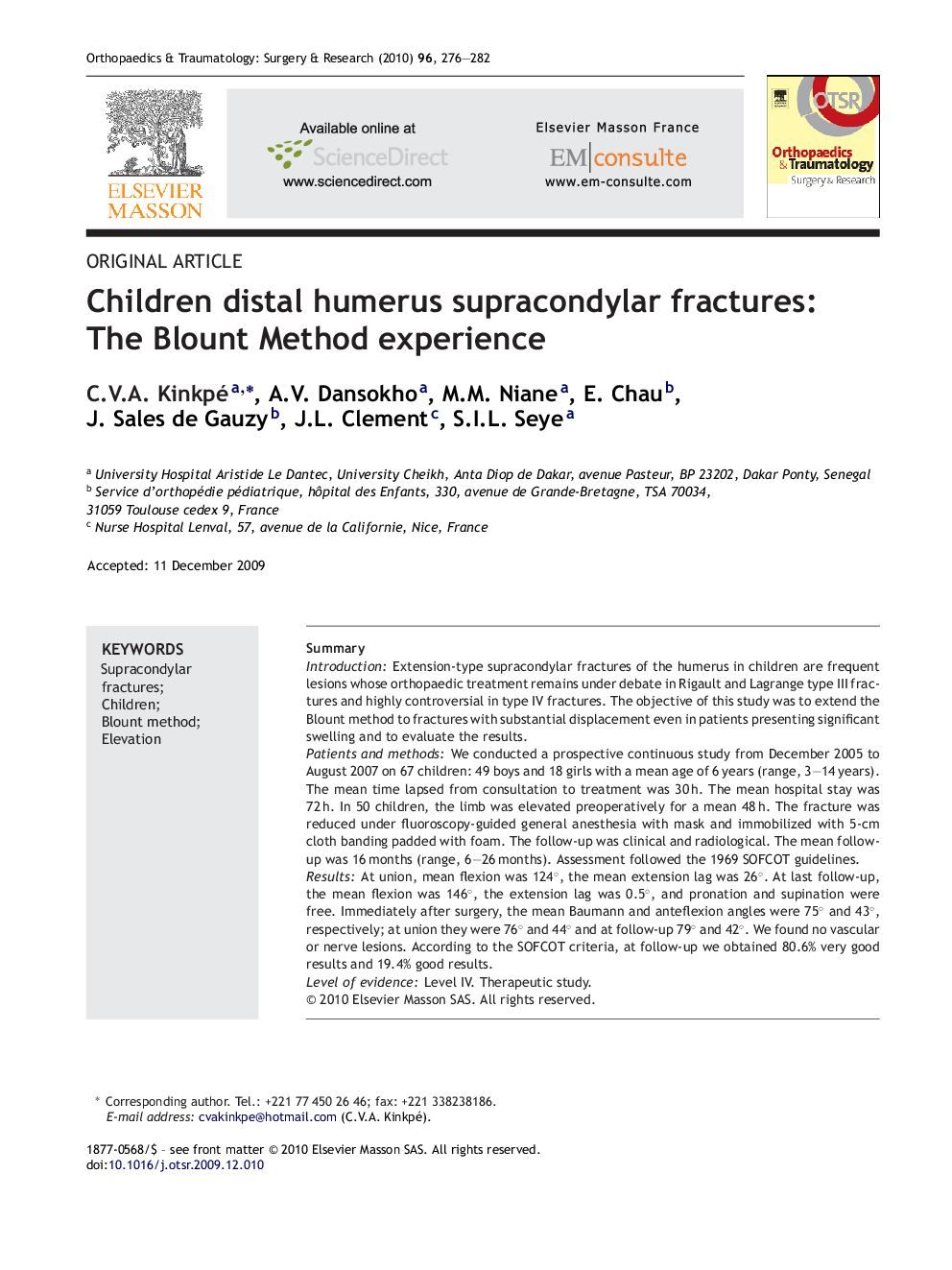| Article ID | Journal | Published Year | Pages | File Type |
|---|---|---|---|---|
| 4082455 | Orthopaedics & Traumatology: Surgery & Research | 2010 | 7 Pages |
SummaryIntroductionExtension-type supracondylar fractures of the humerus in children are frequent lesions whose orthopaedic treatment remains under debate in Rigault and Lagrange type III fractures and highly controversial in type IV fractures. The objective of this study was to extend the Blount method to fractures with substantial displacement even in patients presenting significant swelling and to evaluate the results.Patients and methodsWe conducted a prospective continuous study from December 2005 to August 2007 on 67 children: 49 boys and 18 girls with a mean age of 6 years (range, 3–14 years). The mean time lapsed from consultation to treatment was 30 h. The mean hospital stay was 72 h. In 50 children, the limb was elevated preoperatively for a mean 48 h. The fracture was reduced under fluoroscopy-guided general anesthesia with mask and immobilized with 5-cm cloth banding padded with foam. The follow-up was clinical and radiological. The mean follow-up was 16 months (range, 6–26 months). Assessment followed the 1969 SOFCOT guidelines.ResultsAt union, mean flexion was 124°, the mean extension lag was 26°. At last follow-up, the mean flexion was 146°, the extension lag was 0.5°, and pronation and supination were free. Immediately after surgery, the mean Baumann and anteflexion angles were 75° and 43°, respectively; at union they were 76° and 44° and at follow-up 79° and 42°. We found no vascular or nerve lesions. According to the SOFCOT criteria, at follow-up we obtained 80.6% very good results and 19.4% good results.Level of evidenceLevel IV. Therapeutic study.
